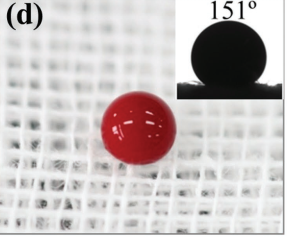本文转自科技日报北京1月28日电 (记者李大庆)使用医用纱布包扎伤口是我们最常见、最常规的止血方法,其机理在于纱布吸收了血液中的水分,使血细胞、凝血因子等浓缩,从而促进血液凝固。然而,传统医用纱布对血液过量吸收的问题被长期忽视,往往致使伤口出血过量,严重时患者依然会因失血过多而导致死亡。记者从中科院获悉,我国科学家经过大量试验,研制出一种不吸血的止血纱布。
传统医用纱布是在包扎伤口时利用压力去压迫伤口血管,使伤口的血液流出速度减慢,但传统纱布会大量吸收血液。中科院化学所高分子物理与化学实验室赵宁、徐坚研究员课题组与南方医科大学邵龙泉教授合作,从材料(纱布)亲水和疏水的角度设计出一种全新概念的止血材料,解决了传统纱布在使用过程中吸血过多的问题。
他们利用纳米技术在传统纱布的纤维表面上把医用长链烷烃构筑成微纳米结构层,将常规纱布由亲血转变成疏血特性,即在处理后的纱布表面上血液不能够浸润;之后他们进一步将疏血纱布与常规纱布双层叠加在一起,利用下层的常规纱布来促进血液凝固,利用上层的疏血纱布产生负压阻止血液浸湿和渗透,从而达到有效止血和降低失血量的目的。

大量的动物实验结果表明,与传统医用纱布相比,新型止血纱布可显著降低失血量60%左右。此外,使用新型止血纱布在颈动脉出血情况下可使得实验白鼠存活时间延长约40%。这种纱布有望为患者争取更多抢救时间。
据了解,该研究成果为高效止血材料的设计提供了一种全新思路,其止血纱布已申请国家发明专利。相关论文于近期在国际学术期刊《先进医疗材料》上在线发表。
参考文献:Superhydrophobic/Superhydrophilic Janus Fabrics Reducing Blood Loss
Abstract
Hemostatic fabrics are most commonly used in baseline emergency treatment; however, the unnecessary blood loss due to the excessive blood absorption by traditional superhydrophilic fabrics is overlooked. Herein, for the first time, superhydrophobic/superhydrophilic Janus fabrics (superhydrophobic on one side and superhydrophilic on the other) are proposed: the superhydrophilic part absorbs water in the blood to expedite the clotting while the superhydrophobic part prevents blood from further permeating. Compared with the common counterparts, effective bleeding control with reducing blood loss more than 50% can be achieved while the breathability largely remain by using Janus fabrics. The proposed prototypes can even prolong the survival time in the rat model with serious bleeding. This strategy for reducing blood loss via simply tuning wettability is promising for the practical applications.